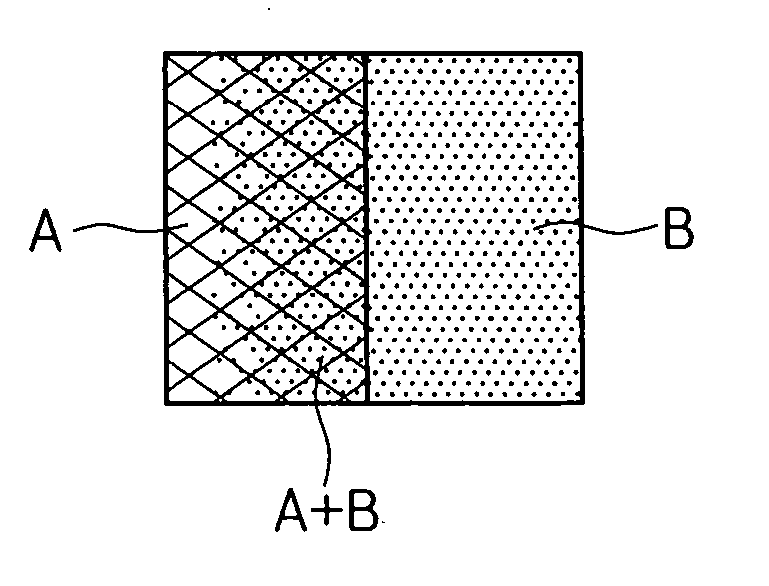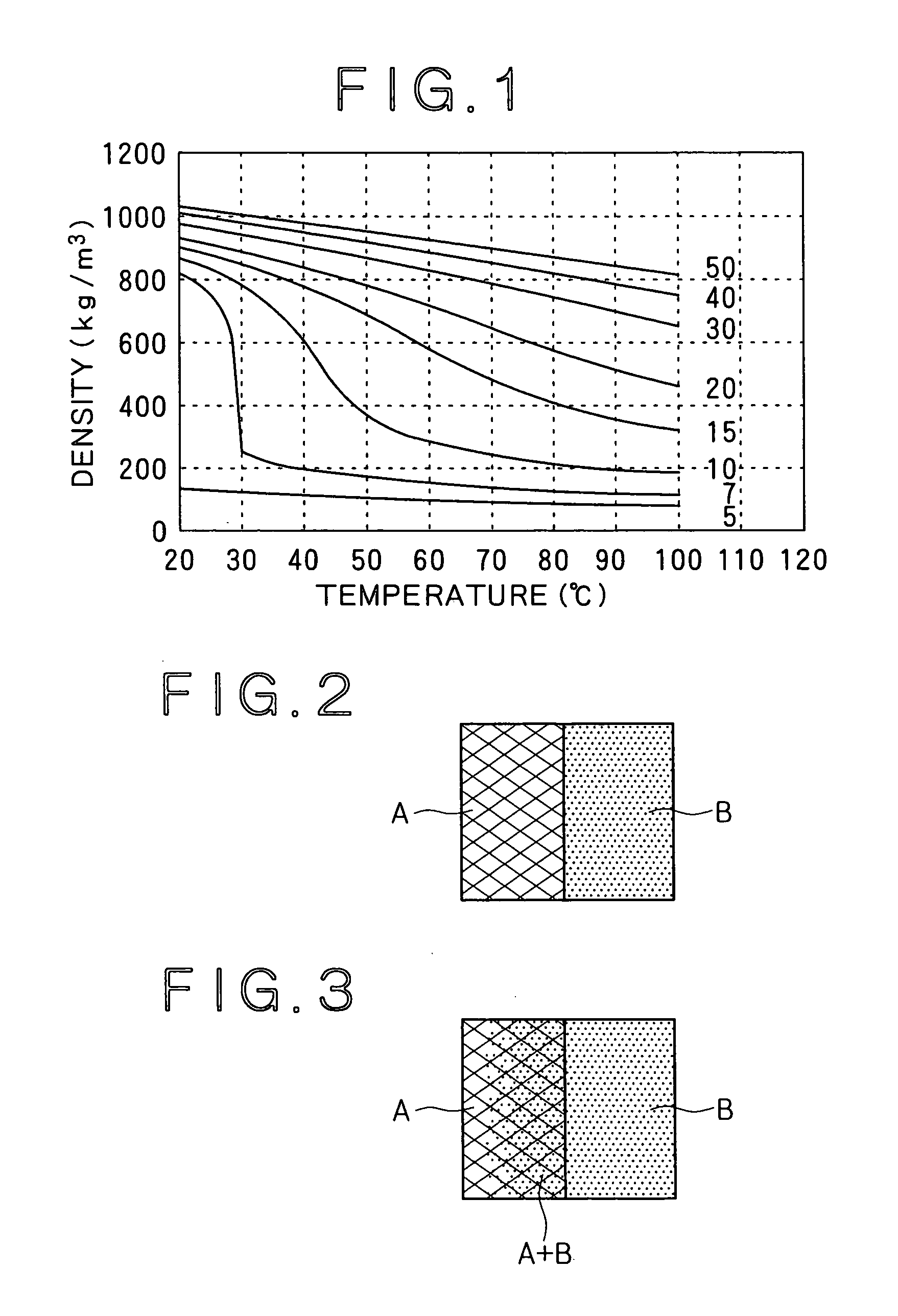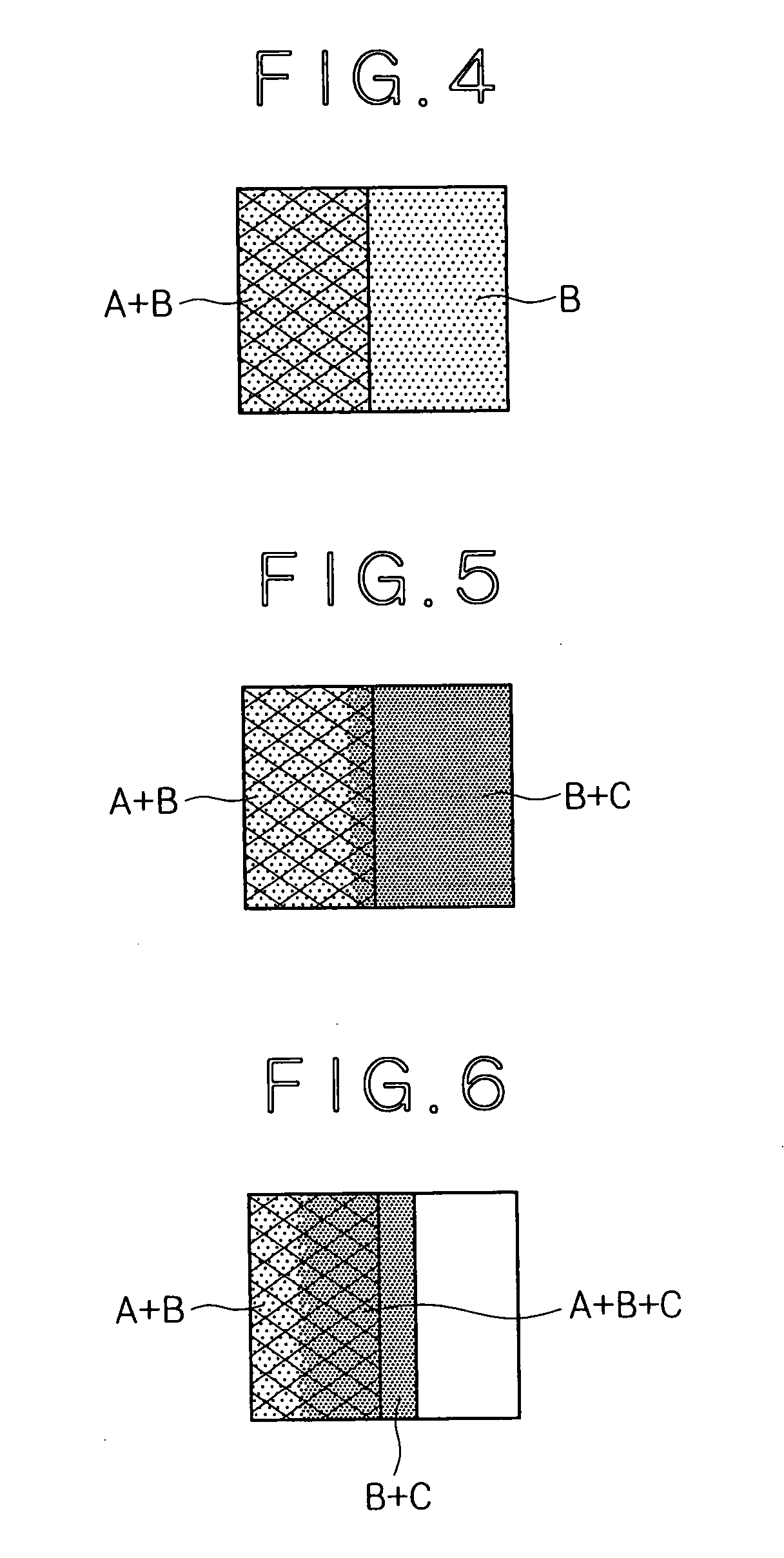Method of impregnation with agent
- Summary
- Abstract
- Description
- Claims
- Application Information
AI Technical Summary
Benefits of technology
Problems solved by technology
Method used
Image
Examples
referential example
Under Pressure with CO2 Alone
[0059] A larch core piece was treated with CO2 alone in Constant Pressure Mode in which the pressure P1 was set at 15 MPa or 30 MPa at a set temperature of 60° C. without using a compatibilizer and zinc versatate. The larch core piece did not change its size between before and after the treatment and showed no crack. This result shows that CO2 can easily penetrate the lumber without differential pressure between the inside and outside of the lumber.
examples 1 to 3
[0061] A Japanese cedar peripheral piece was impregnated with the agent according to Pressure Control Mode 1 of the present invention at a set temperature of 60° C. by repeating the pressure change cycle of 60 minutes two times. In Example 1, the test piece was treated with the agent according to Pressure Control Mode 1 in a concentration of the agent of 0.05 percent by weight, at a pressure P1 of 7 MPa, a pressure P2 of 30 MPa and a density ratio of 5.4. In Examples 2 and 3, the treatment was carried out according to Pressure Control Mode 1 at an agent concentration of 0.25%. According to Example 1, the test piece was impregnated with the agent not fully but to a depth of about 5 mm from the surface, since the agent concentration was low as compared with the other examples. The test piece was impregnated with the agent more than those according to Comparative Examples 2 and 3 where the impregnation was carried out at the same agent concentration but according to Constant Pressure M...
examples 4 to 6
[0063] In these examples, a Japanese cedar core piece having a density higher than that of Japanese cedar peripheral piece was impregnated with the agent according to Pressure Control Mode 1. The entire cross section of the test piece was impregnated with the agent at a pressure P1 of 7 or 10 MPa, a pressure P2 of 15 or 30 MPa and a density ratio of 3.8, 4.6 or 2.9, respectively.
PUM
| Property | Measurement | Unit |
|---|---|---|
| Pressure | aaaaa | aaaaa |
| Pressure | aaaaa | aaaaa |
| Fraction | aaaaa | aaaaa |
Abstract
Description
Claims
Application Information
 Login to View More
Login to View More - R&D
- Intellectual Property
- Life Sciences
- Materials
- Tech Scout
- Unparalleled Data Quality
- Higher Quality Content
- 60% Fewer Hallucinations
Browse by: Latest US Patents, China's latest patents, Technical Efficacy Thesaurus, Application Domain, Technology Topic, Popular Technical Reports.
© 2025 PatSnap. All rights reserved.Legal|Privacy policy|Modern Slavery Act Transparency Statement|Sitemap|About US| Contact US: help@patsnap.com



